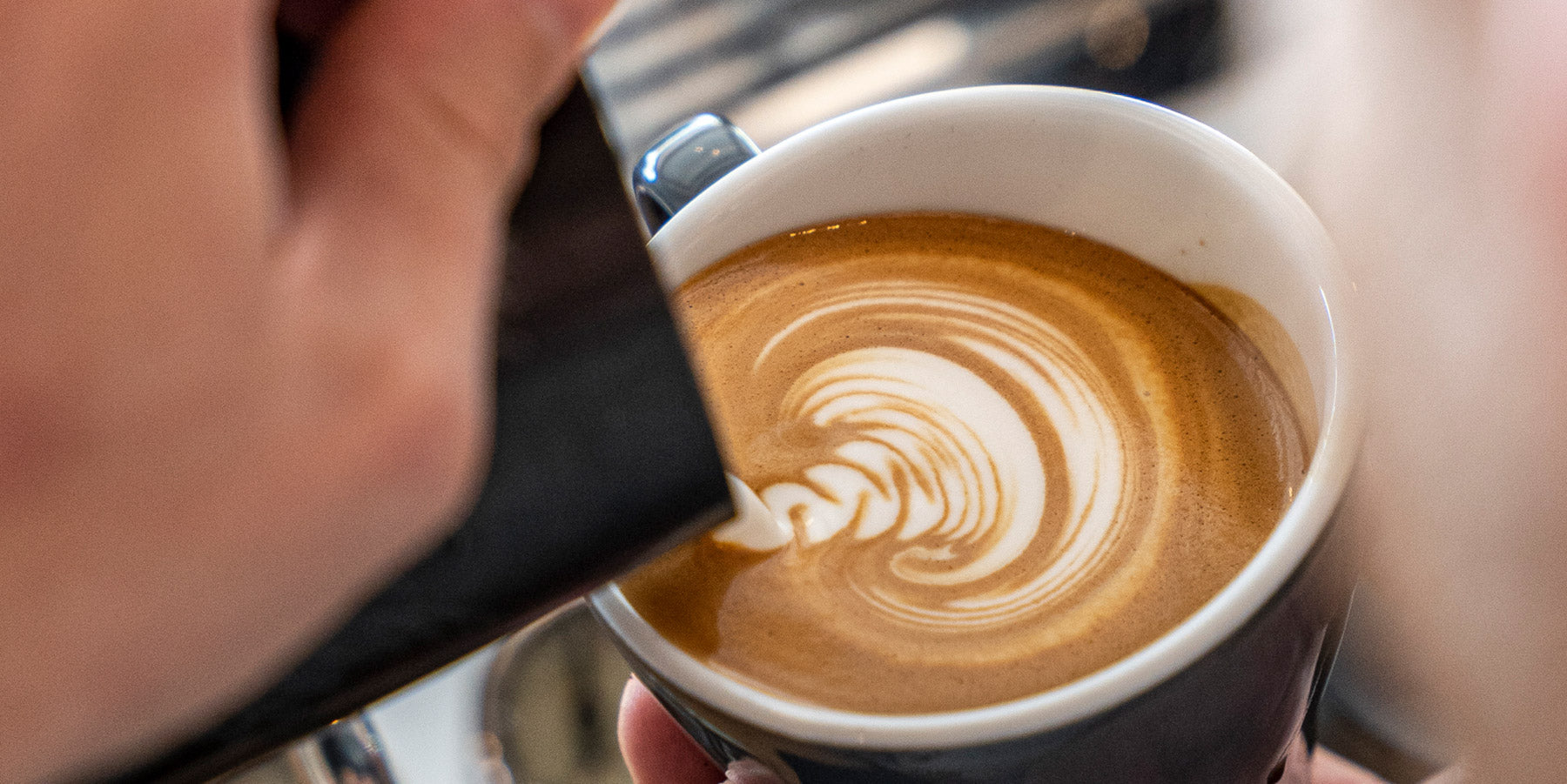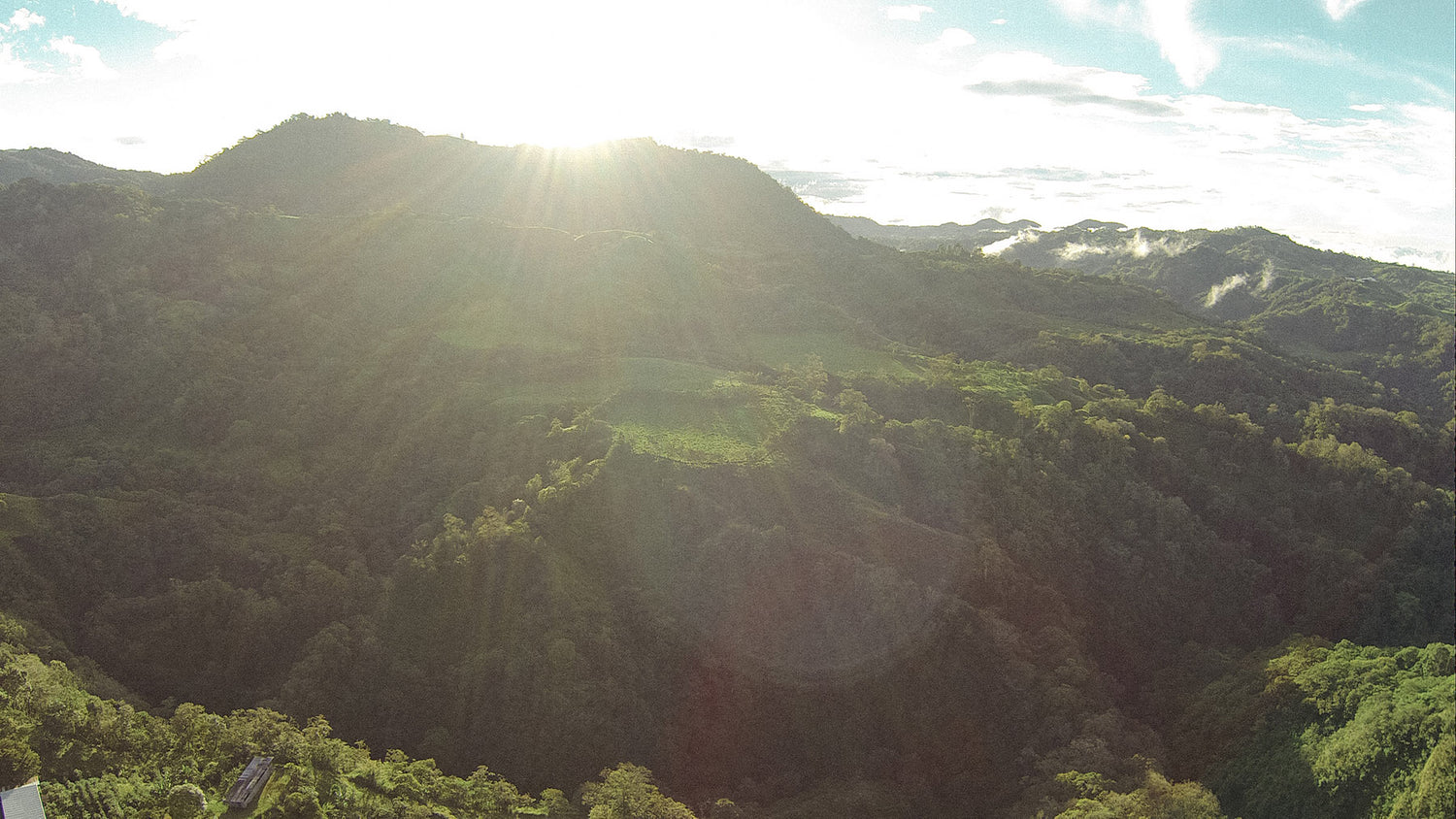In today's part of our online barista course, we'll go into cappuccino preparation in even more detail. To be more precise, we'll show you how to pour the milk optimally so that the espresso and milk mix perfectly and a perfect Italian classic is created. Because a flavorful cappuccino isn't created by simply mixing the espresso and warm milk. A good cappuccino is rounded off with a "head of foam" . Admittedly, this should n't resemble a head of foam like the one we know from a wheat beer, for example. The foam should be creamy and not too reminiscent of paste. You can find out how to pour the milk perfectly in the new edition of our online barista course. Elias Fischbacher from the Wildkaffee Rösterei wishes you lots of fun discovering.
Pouring milk - what the perfect cappuccino should look like!
The cappuccino is one of the most popular types of coffee with milk, alongside flat white , café au lait and cortado . It's no wonder that, if prepared correctly, the cappuccino is particularly creamy. The perfect cappuccino should be based on a high-quality espresso . We recommend a bean with chocolate notes, like our Bergsonne. For the milk, you should go for fresh milk with a high fat content, ideally between 3.5 and 3.8% . As with coffee, you should also make sure that you can trace the supply chain for the milk. Regionality is the key word here.
The milk from local producers usually tastes much better than conventional milk from large dairies. It should be prepared in a portafilter. This way you can extract your espresso optimally and froth the milk perfectly. We already explained how this works in the last article. If all of these factors are right, the result is a drink with chocolate notes, a full-bodied milk taste and creamy foam .

The art of preparation
The art and goal of preparing the Italian classic lies in the harmonious interaction of the three basic components of the Italian classic : espresso, milk and milk foam. However, other coffee drinks such as flat white , café au lait or cortado can also be prepared from these basic components. Therefore, the ideal mixing ratio of the cappuccino is essential.
One third of the cappuccino consists of espresso, the remaining two thirds of milk and milk foam. The transition from milk to milk foam should be as smooth as possible. This means that the foam should not be too thick, otherwise it will float on the coffee-milk mixture , which is not only unsexy, but also simply not convincing in terms of taste. Pouring it correctly ensures that the Italian classic tastes as you would expect! You will find out exactly what you need to pay attention to in the next sections.
The strenght is to be found in serenity
Before you start pouring milk, you should be aware that you won't be able to pour the perfect cappuccino in just a few attempts . It usually takes a little longer to get the hang of it. The first attempts are therefore often frustrating. But if you try and practice regularly, you will soon see the first successes.
Pouring milk is a bit like learning a sport . You start with the basics and then you can gradually get into it. You can then perfect your cappuccino skills with latte art , which we will cover in the last two editions of our online barista course.
Latte Art
As we have already established in the last issues, preparing the perfect milk foam requires a lot of practice. If you go two steps further, you can create the little works of art that you probably already know from your favorite café - latte art. The prerequisite for this is, firstly, perfectly foamed milk and an excellent espresso.
Pouring latte art may look easy for the barista in your favorite café, but in reality, even the simplest works of art are a huge challenge for most people. That's why we recommend that you learn how to perfectly froth milk and pour the milk so that you get the most flavorful end result possible before you start trying latte art . You'll find out how to do this in the next section.

Pouring milk - Barista knowledge
In our YouTube video, our barista Robin Matthijsse shows you exactly what is important when pouring milk for your cappuccino. He also shows you how to best approach your first latte art attempts so that you can achieve the perfect end results in the long term. But you can start pouring milk in the classic way right now. And this is how it works:
- Froth the milk evenly and, ideally at the same time, prepare a single shot of espresso.
- Pour the milk into another jug.
- Now pour the milk into your espresso in slow circular movements so that the crema and milk are homogenized.
- Then tilt the jug and cup slightly so that the creamy foam settles on top.
- Done! Now you can enjoy.
The best way to enjoy this Italian classic is with your friends while having a nice chat. Did you know that in its home country, cappuccino is only drunk in the morning ? Drinking a cappuccino in the afternoon is frowned upon because it is quite rich thanks to the milk. So remember this for your next stay in Italy: enjoy cappuccino in the morning and only espresso in the afternoon.
Conclusion!
A perfect cappuccino requires the perfect implementation of three factors: perfect espresso, perfect milk and perfect milk foam! Once these three factors are met, it's time to pour the milk. You should make sure that the milk and the crema of your espresso are homogenized and that the milk is poured slowly and steadily into your cup.
The foam, which should be particularly creamy, rounds off your perfect Italian classic. The transition between milk and milk foam should be seamless in the perfect cappuccino. So make sure that your foam is not too thick. The icing on the cake for your cappuccino is the artistic latte art ! You can find out how to learn latte art and what latte art actually does in the last two editions of our online barista course! We hope you have fun practicing! #staywild


